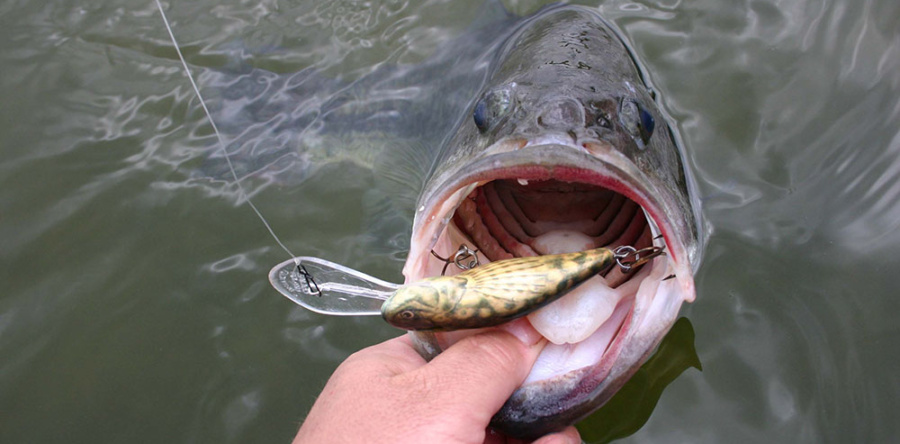Many anglers default to a finesse presentation when they start fishing. We figure we’re catching a few fish per hour, and we’re happy with that.
I’d like to suggest that anglers begin with a more aggressive approach. Especially with bass, instead of starting with plastics or wacky rigs, creatures on jigs, and being satisfied, perhaps we should start with faster lures, like crankbaits.
Begin with crankbaits, and you always can downsize and move into a more neutral approach. In my experience, you often catch more and bigger fish this way.
An active bite provides a good time to experiment with new lures. Some anglers don’t agree with that concept – but I do. Why? Because if a new lure doesn’t catch fish in those ideal circumstances, I probably won’t use that lure again.
With crankbaits, the biggest factor is where and how we’re fishing them. Crankbaits trigger strikes and fish via vibration, profile, rattle versus no rattle, color, depth, and speed. Foremost in catching fish is trolling a crankbait through the walleye strike zone where these fish exist.
I’ve done a lot of crankbait trolling for walleyes. In the water I’m fishing, color is a factor. One color may produce, another color might catch a few, then another color delivers zero success. If fish are super aggressive, I found that color usually is not an ingredient.
With bass, the speed of our retrieve is extremely important. Don’t just cast-out and crank-in all day. Vary your retrieve speed perhaps via stop and go, or try slowing down. With a spinning reel, turn the handle as slow as possible. You never know what might trigger fish.
If you see fish following your crankbait up to the boat, that may mean you’re retrieving it a bit too fast.
Lure profile is important. Consider the design shape, slimmer versus fatter, along with the size. Do fish want a bigger or smaller crankbait?
The box that contained your lure when you purchased it likely includes important information and tips on using your lure. Check it for optimal diving depths.
Consider varying your casting angle, then try pounding outside weed areas and work in. The same rule applies to docks, an area where crankbaits work very well. Again, change speed periodically since fish are not always facing the same way. (That’s another reason to change your casting angle.)
Avoid leaders. They minimize vibration, and they’re stiffer and less vibrant than monofilament line. I usually use 10-pound-test, but you also can consider fluorocarbon.
Tie your line directly to the crank and eliminate all unnecessary hardware. Don’t always expect a harsh or abrupt bite. Fish do not always hammer crankbaits.






